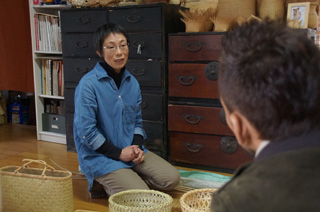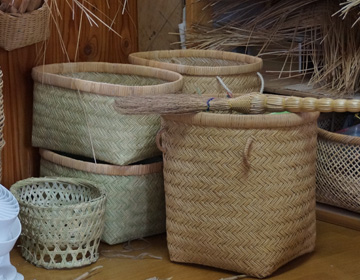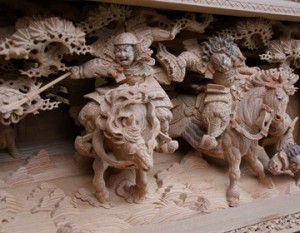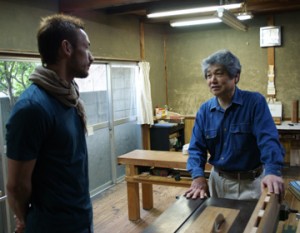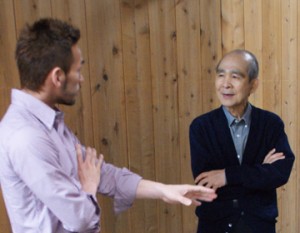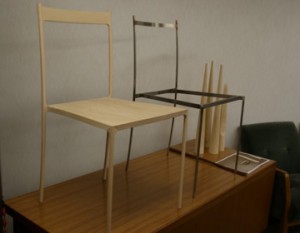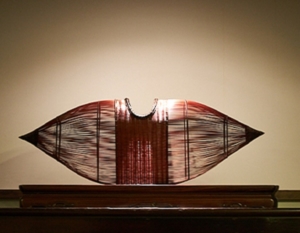What is Torigoe Bamboo Craft
”Torigoe Bamboo Craft is said to be a ”kogei” that has a tradition of 1000 years”, said Megumi Shibata who has been making Torigoe Bamboo Craft in Torigoe area in Ichinohe city of Ninohe ward in Iwate. It is said that the monk who founded Torigoe Kannon temple brought this, and it is believed that the origin goes back to the Heian Period.
Torigoe Bamboo Craft takes the local thin bamboo called ”Suzu Take” which is split in four, and the inner part is scraped then women tightly to make it strong. Like it was in the old days, they still make daily ”utilities” such as baskets, sieves and trunks for storing clothes. It is a traditional ”kogei” that is close to our daily life. Also, as you use it for a long time, it creates a special gloss and atmosphere which attracts many fans and repeat customers.
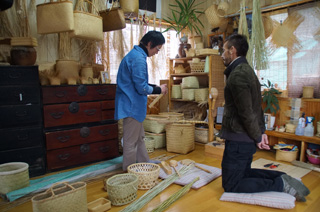
Things that change with time
Shibata is worried that the artisans are getting old, and the number of younger artists is not increasing. ”The number of people who want to learn as hobby is increasing, but not much for those who wants to do it as work… Therefore, I want to spread it more to the younger generation.” Shibata told us.
For that, they need a design that is suited to the modern lifestyle. Nakata asked what has changed and Shibata replied, ”When we talk about a round basket, there were only simple round baskets. But to suit the shape of the modern kitchen, we have started to make oblong shaped baskets too.” She said she was also thinking about combinations with other materials.
”But I am not a professional for other materials, and that makes things difficult. We are talking about collaborating with other lacquer artists and carpenters.”
Following that conversation, Nakata also contributed with other ideas.
”Most items are basically round. Can you add many sharp corners?”
”That might be an idea, but with the current particular technique it may be difficult.”
”How about making tableware baskets that can be stacked up. You can put the rice bowl at the bottom and put the chopsticks at the top. Making variations by changing the density of the weave and interchanging the combinations.”
”That is a great idea. When we talk like this, it is really fun that many ideas that I may never have thought of come up. I will definitely try it and send you the prototype.”
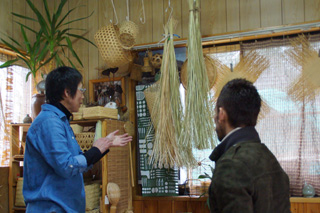
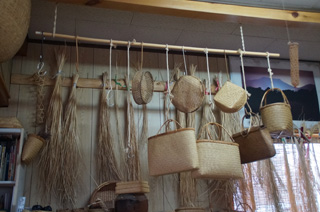
It is sad to see the craftsmen disappearing
In the old days, Torigoe Bamboo Craft was made as a source of supplemental income for the farmers when they did not have any farm work. It was a precious source of cash income. During the Edo Period it was featured as local ”kogei” but according to Shibata ”it was in fact made by the farmers only during the winter. Probably it was made in most households.”
Shibata was born and raised in Torigoe. So Torigoe Bamboo Craft has always been close to her life. She watched her mother make it since she was a child. But she cold us, ”She didn’t teach me how. She was busy with many things and never had the time.” When her mother became ill, it made her sad to realize that no one would be able to make them, so she taught herself how to make the crafts.
Many things exist around us now as a daily tool that has been passed on from the past, or ”kogei” that are rooted in the community. In the small village at the northern part of Iwate prefecture, a bamboo craft with 1000 years history is still being passed along.
